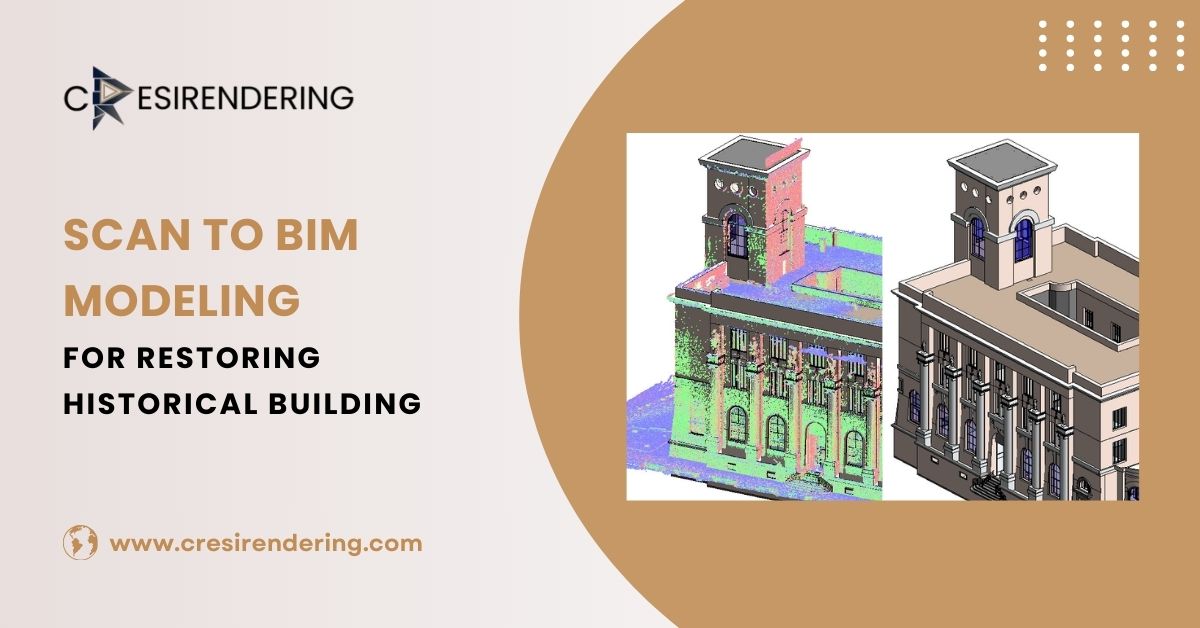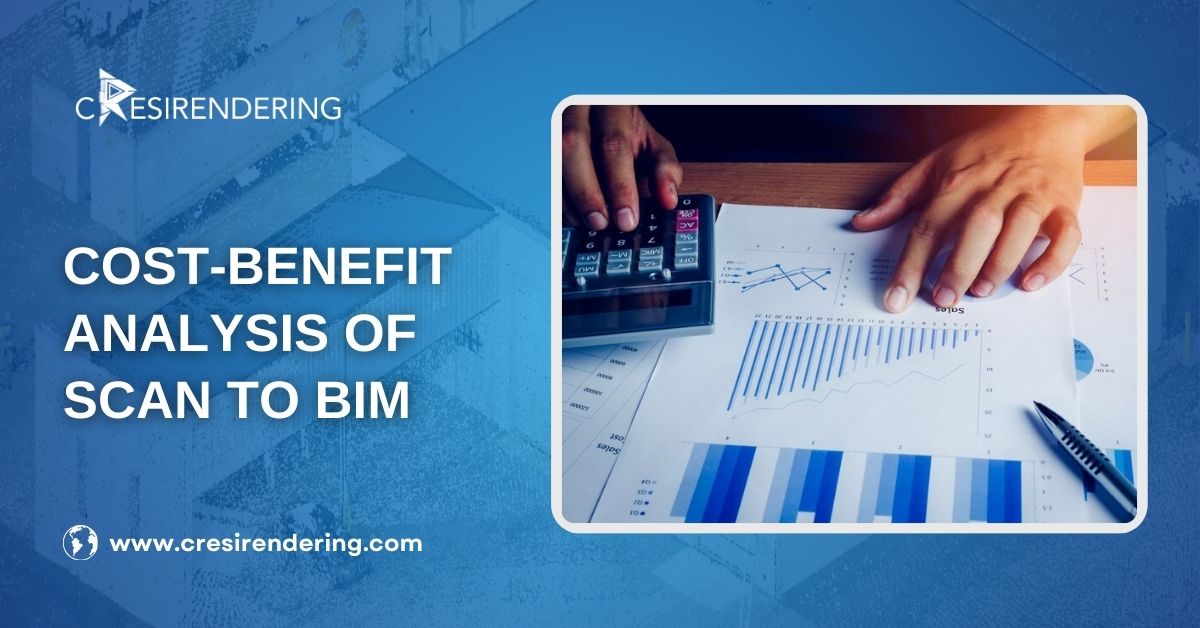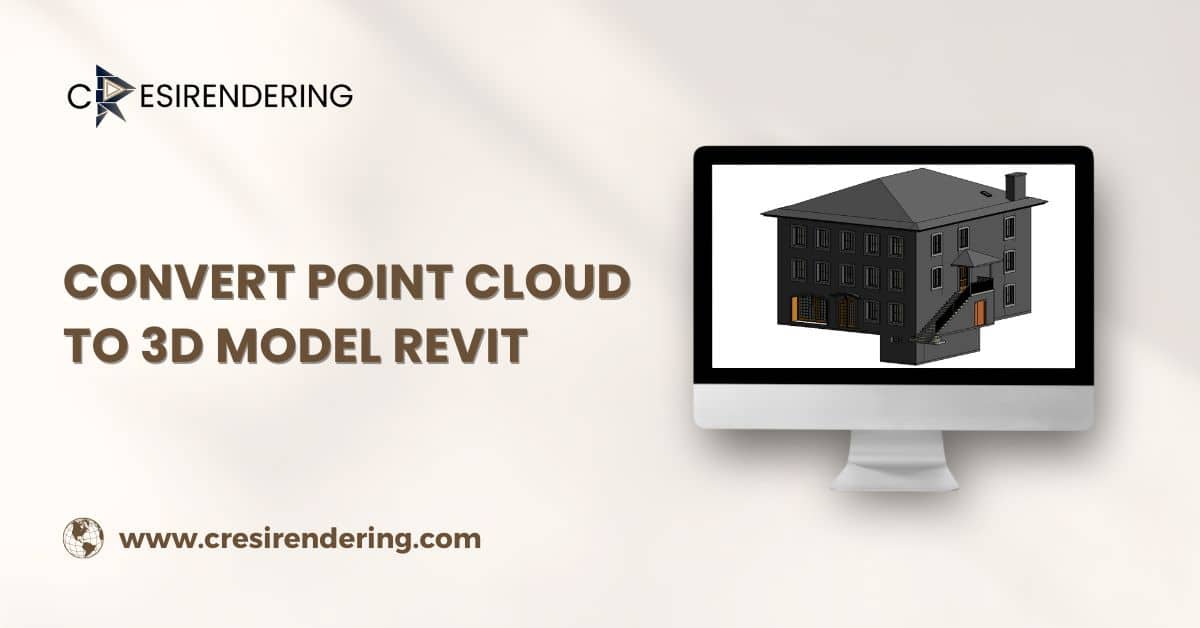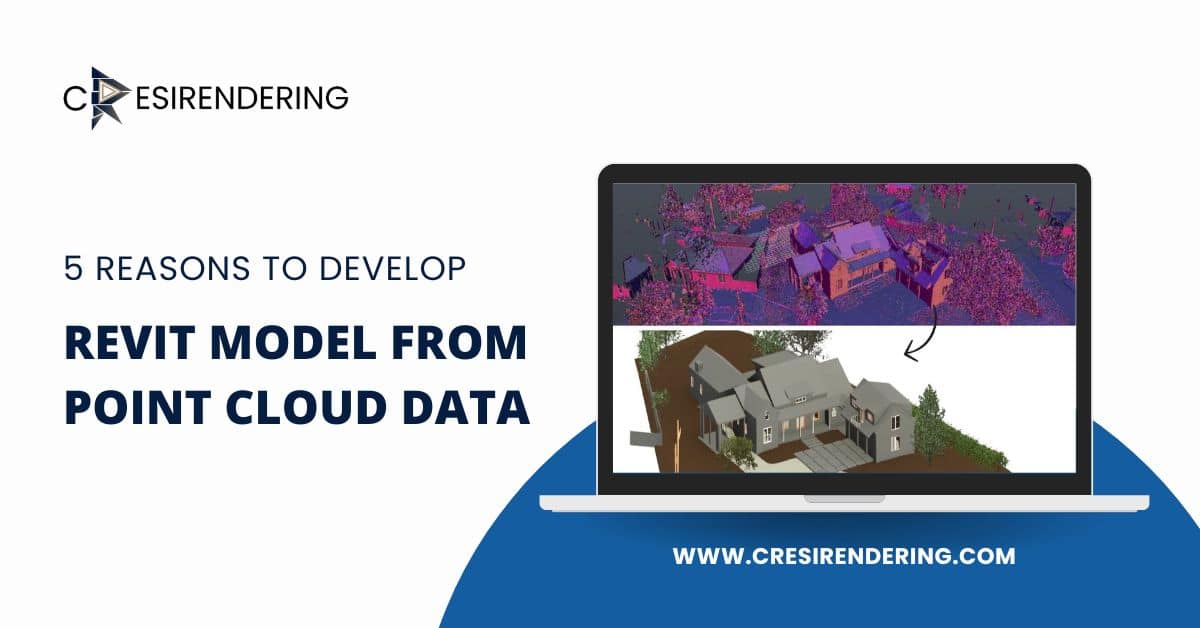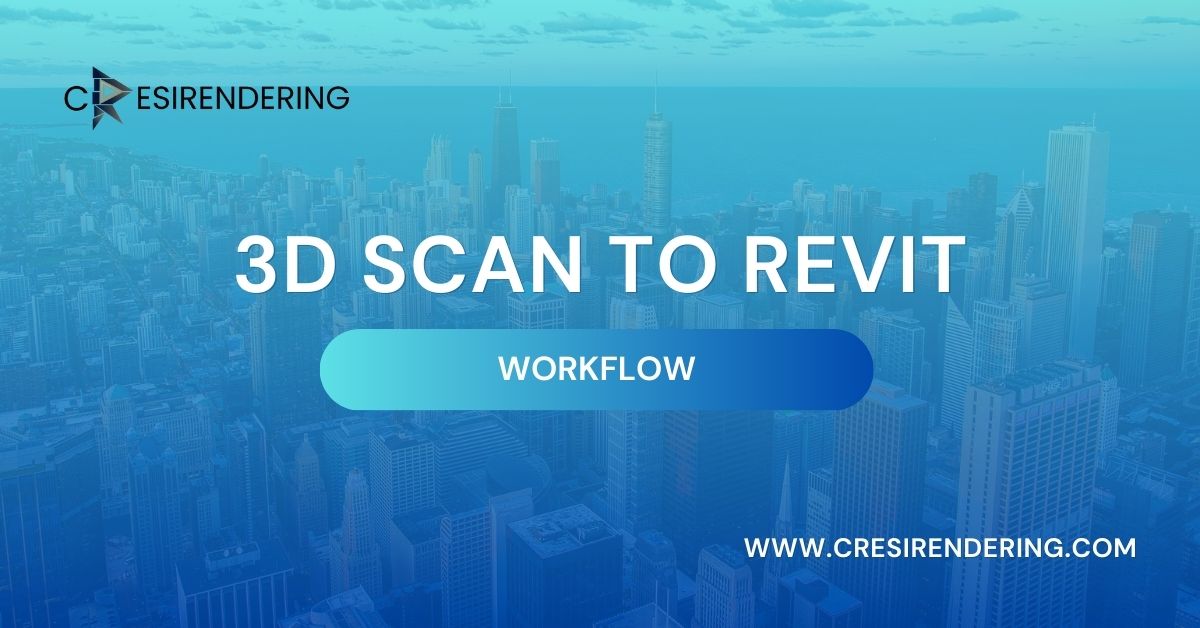Introduction
Preserving architectural heritage of the bygone eras requires much more than just photographs and sketches, it requires precision, accuracy and a deep understanding of the whole structure’s physical and cultural context. This is where Scan to BIM heritage technology comes in. It transforms the way we approach heritage conservation and restoration all together by converting 3D laser scans of an existing structure into a digital three dimensional BIM model. You can document, analyse and even restore any historical building with much more confidence and accuracy.
However, all heritage projects have their own set of unique challenges that set them apart from any modern construction. Such buildings of the past have complex geometries, fragile materials and even intricate ornamental details with unknown structure, these can be difficult to capture and model.
The limited accessibility and risk of physical disturbance add on to such problems. Through Scan to BIM for such heritage projects, professionals can overcome these limitations with efficiency, ensuring every detail – structural or ornamental – are fully represented in the digital model, preserving the essence of history, which otherwise might have been lost forever.
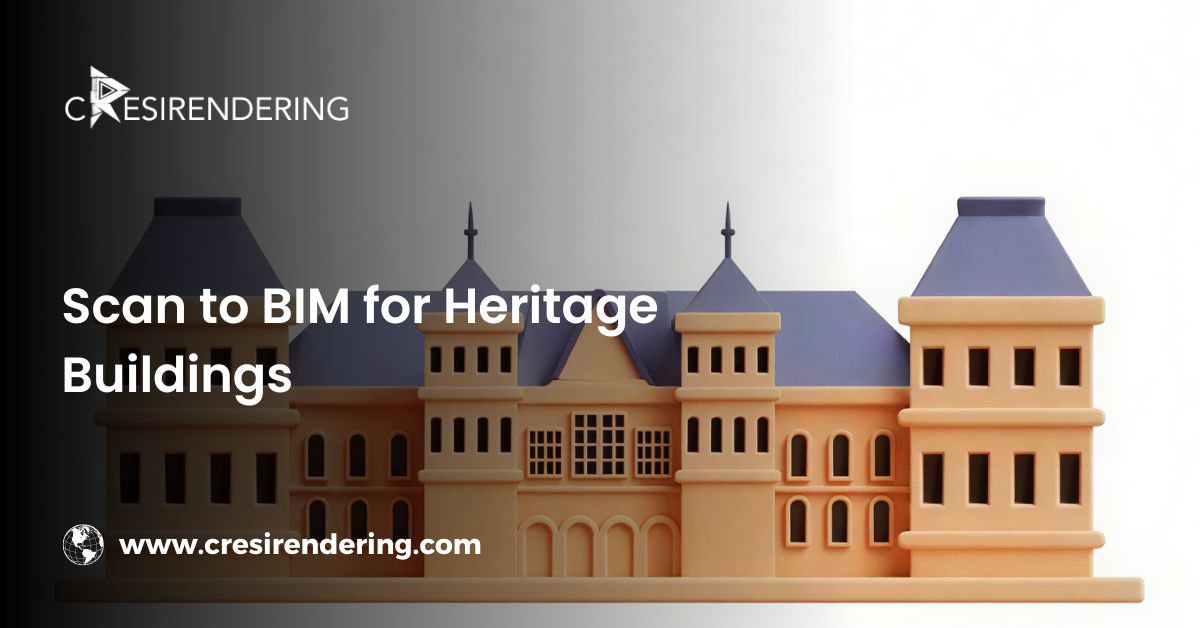
Importance of Scan to BIM in Heritage Projects
In any restoration or conservation projects using Scan to BIM technique, laser scanning serves as a critical first step in capturing intricate – structural, architectural or ornamental details of the historical structures that manual measurement cannot reliably record in that amount of time.
High-density point cloud data can map surfaces, textures and even hidden details that might be missed by a human. This allows professionals to understand the full complexity of the existing building. Once the scanned data is captured, BIM becomes the platform for historical BIM modeling. This model can become a foundation for preservation BIM, renovation and even documentation.
A BIM model does not only store geometries but semantic information including type of material, construction phases, history and any maintenance data, required for future. It also enables early clash detection for any restoration project. In short, Scan to BIM heritage practice offers turns the complexities of heritage architecture into accessible and usable digital assets. You can ensure any change you make today is informed, reversible, and aligned with conservation ethics.
Common Challenges in Scan to BIM for Heritage Buildings
1. Complex Geometries and Irregular Shapes
Historical buildings rarely follow any modern construction norm or design details. With such hand-crafted builds, it is difficult to capture and reconstruct exact forms without any guesswork. Conventional surveying methods often fail to represent non-uniform surfaces or geometries accurately.
High-density LiDAR laser scanning and photogrammetry are two scanning techniques that can provide detailed point cloud data for not only structure and building but materials, surfaces and textures with all their variations and an unprecedented accessibility with comprehensive coverage in lesser time. These high-density datasets also help overcome many point cloud challenges during processing.
2. Data Noise and Incomplete Scans
These buildings are not usually in the best of context areas to achieve clean scans in one go. Obstructions like vegetation, structure and even restricted access due to safety can lead to data gaps or noisy scans, forcing professionals to make guesses. This can lead to misrepresentation of the whole structure and even history!
Multiple scans, planned strategically across the site with a combination of multiple methods from LiDAR to photogrammetry can be employed, suitable to the project. All scans can be processed and merged into one but are necessary to avoid any blind spots.
3. High Level of Detail (LOD) Requirements
An informed and accurate heritage restoration demands no less than a Level of Detail 400-500, meaning every minute and intricate detail, carving, moulding and much more are captured and modelled. This could, however, mean excessively heavy models which are difficult to manage or even study and analyse.
Balance is the key. Focus on architecturally and structurally significant elements while using simplified and repetitive geometries to keep the 3D BIM model light and manageable for use. Also, an appropriate LOD standard must be established as per the scope of the project.
4. Material Degradation and Damage
Centuries of weathering, biological growth and human interference cause surface irregularities that affect the overall scan accuracy. Damaged materials can confuse scanners, resulting in inconsistent data or incomplete points.
Scan to BIM heritage allows advanced filtering, colour mapping and hybrid scan-photogrammetry techniques to differentiate material textures and degradation patterns. With correct noise-reduction tools, clarity can be improved and after an on-site verification a process of accurate modeling can begin.
5. Alignment and Registration Errors
Historical structures, especially of larger scale like forts and cathedrals require multiple scans resulting in multiple dense point cloud data. They need to be aligned, registered and merged into one integrated model for a seamless BIM workflow. Any misalignment within this can result in messy errors and discrepancies causing time and cost overruns.
An advanced registration software with right technical expertise and experience can give you a precise alignment and clean model. Autodesk ReCap Pro, Leica Cyclone or FARO Scene are a few such software. Additionally, target-based and cloud-to-cloud registration techniques give accuracy whereas constant quality audits ensure you and your model are on the right track.
Strategies to Overcome These Challenges
- Employing expert surveyors with experience in heritage: Scan to BIM for heritage projects can be a little tricky. Hence they demand experienced surveyors who not only understand the technicality of the scans and software but the architectural history and context. They can plan scanning paths with safety, understand structural integrity and fragility without missing any detail. This can minimize missing data while improving the overall quality.
- Ensuring a structured Scan to BIM workflow: A defined and structured BIM workflow helps everyone stay on the same page without any confusion. The whole process from data capture, filtering and 3D BIM modeling with verification gives you a clean and detailed 3D BIM model for better collaboration and project efficiency.
- Using Revit families for heritage elements: Autodesk Revit for restoration is slowly becoming the norm. You can create custom Revit families tailored uniquely for your heritage project and its elements. These smaller element models can be reused across the project to maintain consistencies and reduce manual effort in the long run.
- Implementing QA/QC protocols for data accuracy: In any Scan to BIM heritage process quality assurance and quality control are needed to maintain accuracy and prevent any missing data. This can really result in losing a piece of history forever. QA/QC should be integrated at every step of the BIM workflow to detect any error or discrepancies quicker.
- Close collaboration of surveyors, architects and historians: Any heritage project is never a one man’s job. It demands an intense interdisciplinary collaboration between surveyors, architects and historians to ensure technical precision, historical accurateness and contextual grounding. A right workflow creates a heritage project that remains true to the original heritage intent.
Benefits of Accurate Scan to BIM for Heritage Conservation
A well-executed Scan to BIM heritage process offers much more benefits beyond only restoration.
- Preservation and documentation: Creates a detailed digital archive of architectural heritage while supporting a virtual reconstruction for future generations.
- Efficient Restoration Planning: Helps you visualise the complex structure to plan better as per complexity, structural integrity with non-invasive interventions.
- Minimizing Risks: Better planning reduces on-site errors and risks to handle these fragile structures better without compromising your own safety.
- Cultural Continuity: Can create a foundation for rich virtual reality walkthroughs and heritage tourism experience to enhance public engagement and overall education.
Conclusion
Even when heritage projects with Scan to BIM heritage present their own set of unique challenges. Do not take any stress, you can easily overcome them with a balanced approach, structured workflow, meticulous planning, advanced technology and good collaboration amongst your stakeholders. Addressing irregular yet intricate geometries, data noise and alignment errors through experience leads to intelligent models. This forms the backbone of a preservation BIM.
Partnering with us, Cresire Consulting ensures your every stage – from data capture to final BIM modeling and integration is handled with accuracy and care. Right strategies are used where Scan to BIM heritage process bridges the gap between the past on-site and the digital future of heritage conservation.

